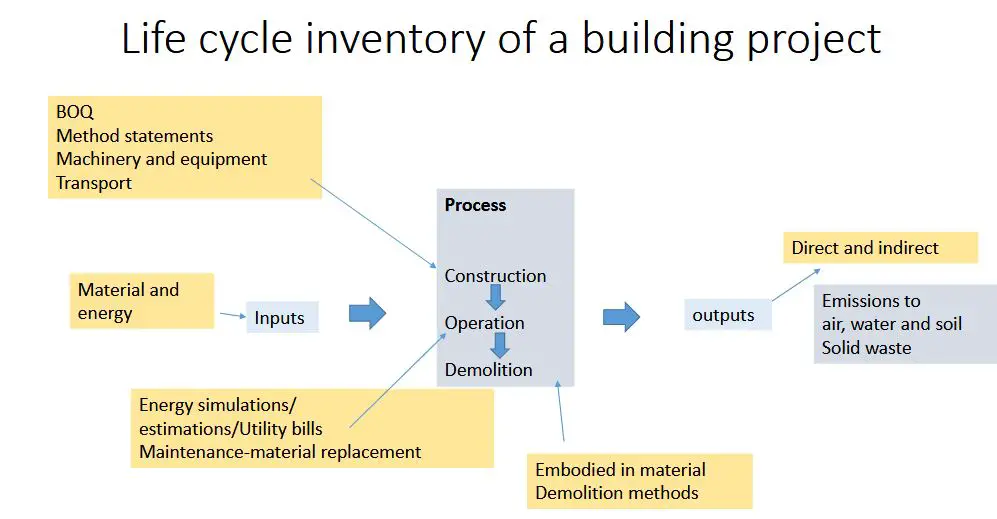Table of Contents
Life Cycle Assessment (LCA)
LCA is a multi-step process for calculating a product’s or service’s lifetime environmental impact. LCA encompasses the entire process of goal and scope definition, inventory analysis, impact assessment, and interpretation. The process is iterative by nature, as the quality and completeness of the information, as well as its plausibility, are constantly tested.
Life Cycle Inventory (LCI)
The data collection component of LCA is the Life Cycle Inventory. LCI is a simple accounting of everything that is involved in the “system” of interest. It entails meticulous tracking of all flows into and out of the product system, including raw materials or materials, energy by type, water, and specific substance emissions to air, water, and land. This type of analysis can be extremely complex, involving dozens of individual supply chain unit processes (e.g., raw resource extraction, various primary and secondary production processes, transportation, and so on) as well as hundreds of tracked substances.
Life Cycle Impact Assessment (LCIA)
Life cycle impact assessment (LCIA) is the “what does it mean?” step. LCIA analyzes the inventory for environmental impact.
For instance, the production of a product may consume a known volume of natural gas (this information is part of the inventory); during the LCIA phase, the impact of this fuel’s combustion on global warming is calculated. Globally, there are numerous methods for classifying and describing the life cycle impact of flows to and from the environment, which can impede the comparability of LCA studies.
Other variables in LCIA include the system boundary (how far upstream, downstream, and side stream the analysis extends), the functional unit (volume, mass, and function of the object being evaluated), and specific LCIA methods such as allocation (how are impacts assigned to the product and by-products, on what basis). When comparing two LCA studies, these factors are crucial for determining whether the studies are comparable.

Life Cycle Costing (LCC)
- Life cycle costing is an economic analysis technique that considers all costs associated with the construction, operation, and maintenance of a construction project over a specified time period.
- Life cycle cost optimization should replace the conventional approach of minimizing construction expenses.
- Economic considerations are crucial to the decision-making strategy.
- Life-cycle costing (LCC) is the identification and documentation of all costs incurred over the life of a product or service.
- LCC is typically a cash flow-focused cost accounting system with no cause-and-effect relationships, and it is widely used for capital investment projects.
- LCC is an efficient method for forecasting and assessing the cost performance of a product or service.
- The LCC method assists in comparing the capital costs and operating costs of competing design options in order to determine the optimal option.
- LCC allows for improved resource management due to long-term cost visibility and the identification of high-cost functional stages, and also provides opportunities for improvement.
- According to Australian Standard AS/NZS 4536: 1999, LCC is the sum of a product or service’s acquisition (capital) cost and ownership (operational) cost over its entire life cycle, from mining to material production, manufacturing, distribution, usage, maintenance, and end-of-life disposal.
- LCC is related to LCA from an economic point of view, and when combined with LCA, it can help come up with the best or most cost-effective environmental solutions.
- The time value of money is expressed as a discount rate that varies according to capital costs, inflation, and social behavior.
- Considering the inflation rate and discount factor, the following equation can be used to calculate the present value of any future cost of a product or service.

- Life Cycle Cost = Capital Cost + PV of operational cost + PV of maintenance cost + PV of end of life disposal cost – PV of residual cost
Learn more about economic indicators here.











